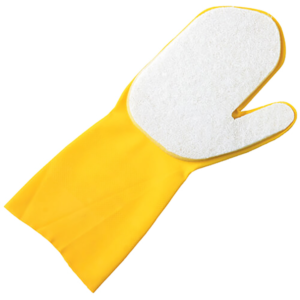
What is Pink Algae and How Can I Get Rid of It?
If you have recently noticed a pink coating or pink spots at the bottom of your pool, you may be dealing with pink algae. Any type of algae or bacteria growth in your pool is never good, so it’s important to understand what type of algae is in your pool, why you have it, and how to get rid of it.
The experts at LinerWorld are here to answer some of the most common questions about pink algae and how to get rid of pink slime in a pool. If you’re currently dealing with pink algae in your pool, continue reading below!
What are pink algae in swimming pools?
Pink algae are a form of bacteria that are sometimes referred to as pink slime. This type of swimming pink bacteria appears as reddish-pink gunk in your pool and causes slimy streaks in corners, crevices, pipe fittings, and light fixtures. Pink algae can appear on the water’s surface and may slowly spread over an entire pool area.
Why do I have pink algae infestation in my pool?
Pink algae will form slimy pink or clear layers over your swimming pool surfaces. The pink coating typically appears in areas of the swimming pool that aren’t exposed to direct sunlight and with little to no water movement.
While no specific cause is known, pink algae are generally attributed to poor pool maintenance and water chemistry, which encourages algae growth and bacteria.
Why are pink algae a problem?
The growth of pink algae in swimming pools can be a problem because it can be difficult to get rid of. It is a resilient bacteria that can survive even in harsh swimming pool environments, such as those with high chlorine levels. It can also attach itself to pool surfaces, making it hard to remove.
In addition to being unsightly, pink algae can indicate other problems with the pool, such as poor circulation, insufficient cleaning, or imbalanced water chemistry. Therefore, it is important to address pink algae growth as soon as possible to prevent further issues with the pool’s health and cleanliness.
How to get rid of pink slime in the pool
The big question that many pool owners have is: “How do I get rid of pink algae in my pool?” Here are some different ways to get rid of pink slime in a pool, comparing chemical and natural methods.
Chemical Methods
1. Balance the Chemicals
Balance the chemicals in the pool to stop algae and bacteria growth. Be sure the pH, alkalinity, and water hardness are at the correct levels. Adjust the water’s pH to 7.2-7.8, the calcium hardness to 200-400 ppm, and the alkalinity to 100-150.
2. Shock Treatment
One of the most common ways to get rid of pink algae is to shock the pool with a high dose of chlorine. This will kill the algae and prevent it from coming back.
Shocking a pool entails raising the chlorine to 12 ppm. It is important to follow the manufacturer’s instructions and to wait until the chlorine levels have returned to normal before using the pool again.
Normally, once the chlorine level is between 1.0 and 3.0 ppm, it is safe to swim again.
3. Algaecides
Another option is to use an algaecide, which is a chemical that specifically targets algae in pools. Algaecides can be effective against pink algae, but the problem is that pink slime is caused by bacteria, not by true algae.
However, some formulas will kill most types of bacteria, specifically pink slime. You can find these treatments at your local pool store.
Natural Methods
1. Brushing
One way to remove pink algae from pool surfaces is to brush it off manually. This can be a time-consuming process, but it can be effective if done regularly.
Bring the pink algae to the water’s surface by brushing the bottom, sides, and steps of the pool. Once all the surfaces have been brushed, run the pool filter continuously and backwash twice per day until the water is clear again
Continue brushing the walls, vacuuming the bottom of the pool, filtering, and backwashing to remove additional algae.
LinerWorld’s SCRUB-O Pool & Spa Scrubbing Mitt makes it easy to clean pink algae around skimmers, stairs, returns, and ladders. The latex glove and scrubber pad allow you to scrub safely without damaging your liner.
Shop Now:
SCRUB-O Pool & Spa Scrubbing Mitt
2. Proper Water Circulation
Pink algae thrive in stagnant water, so ensuring that the pool water is circulating properly can help prevent and eliminate pink algae growth. This can be achieved by running the pool pump and filter for longer periods of time.
It’s important to remember that correctly getting rid of any type of algae takes time. Unfortunately, pink slime tends to be resistant to chemicals.
If the pink algae aren’t completely removed, there’s still a chance for it to continue to grow and spread. If a serious infestation occurs, it can turn the pool water cloudy or green.
You may also run into a problem where it won’t come off at all by brushing it. If this is the case, then you may have a more serious problem, such as metal staining.
Are pink algae dangerous?
Yes and no. Pink algae is not a pathogen, so it poses no real danger to your health. That being said, swallowing your pool water is never a good idea. Also, pink algae can make pool fixtures, like ladders and stairs, more slippery, contributing to injuries from slips and falls.
More Pink Algae Tips
Although it’s not entirely clear why pink algae is a recurring problem in pools, we know that it also occurs outside of swimming pools. In fact, the growth of the bacteria can occasionally be seen in toilet bowls, sinks, saltwater tanks, and showers, so pool owners aren’t alone!
One thing is clear: by properly maintaining the water chemistry, structure, and environment of your pool, you’ll have a better chance of avoiding pink algae in your swim area.
For more insights and tips for dealing with algae, weeds, and pests around your swimming pool, check out the other handy resources on our blog below!
Last Updated 04/10/2023





Will not brush up,and it is not slick. Almost looks like a stain. We put in a new liner and it showed up. It is in sunlit area of the pool and just at a lose of what to do. Pool is clear and chemicals are correct. If anyone has a suggestion,please let us know.
This is a great article. Thank you for sharing solutions to get rid of pink algae. This blog is beneficial for all pool owners. Keep on posting!
I’m a pool guy in CT. Going online to determine how to get rid of pink slime in the pool is often misleading. (Hypocritically) they state that it’s easy to get rid of if you do several steps. It certainly is not. I’ve been dealing with this issue for decades. Yes, super shocking is imperative but I’ve been using Pink Treat in conjunction with the shocking, with “decent” success. Couple things, your pool will be out of commission for at least 3-4 days. Balance the water, THOROUGHLY brush entire pool/spa surface, apply shock and pink treat, double dose at least regarding shock. Most sites say double,triple, quadruple amounts of shock. Ok, but one has to consider certain factors. For instance, if liner is really old you might not want to go overboard with the shock. Bleaching, making liner more brittle, etc.
Unfortunately, what’s going to weaken your chances of success is that this slime loves hidden areas. It is most assuredly in the pipes from your pool to the filter site, in the filter, and don’t forget it’s two favorite places: underside of ladder treads and (nobody bothers to mention this) inside the light niche. Oh, and by the way, it’s in your robot too. It’s downright stupid to use your robot during the process of eradication. It gets impregnated in the cartridges inside robot and (I’m guessing) that it actually aids in spreading this bacteria through the return of the robot. Pick a good span of time, pool will be unusable, balance water, thoroughly brush pool. Take your robot (which is turned off) or manual vac system and put in shallow end- might as well treat that as well- don’t forget to remove light(s), leave dangling underwater, do it, there’s only one set screw, Definitely clean/backwash filter first. Turn off pump. Wait 15 minutes for water to settle. Administer chems. I usually put a little more pink treat around light niche, ladder, inside skimmer. Don’t worry if pool turns green, it’ll clear up. Let pool sit for 2 hours, then run pump for 24 hours. After 24 hours thoroughly clean/ backwash filter again. Check chemical levels. More specifically, see if previous shock has been utilized. If so, hit it again with shock. Your checking for free chlorine level not total chlorine level. You might have to repeat this “easy” process again. And before I really text your ear off let me tell you where it comes from. Where I think it comes from. Almost invariably, approx. 95% of the time, when I see it and ask the homeowners if they or someone who used the pool recently had been to the beach they say yes. I’m quite convinced that it originates from the ocean. Think about it. Impervious to chlorine. What’s in the ocean? NACL, salt. “CL” Veritable millenniums of evolutionary time to build up resistance to chlorine. Remember, just shocking doesn’t eradicate it. And hey, how about that red tide? Being in CT, I also believe that it can be delivered via airborne. Bottom line, tough battle, be diligent. Wash those bathing suits. Or they won’t be the only things left hung out to dry.
Thank you for educating us! This is an excellent article for all pool owners. Regular cleaning is a must to avoid having algae in a pool.